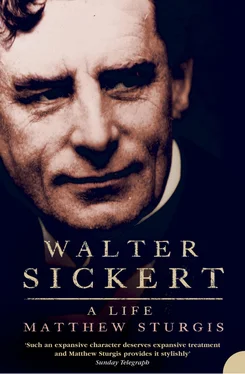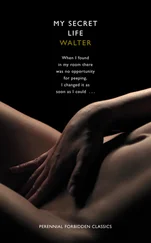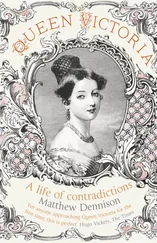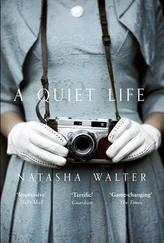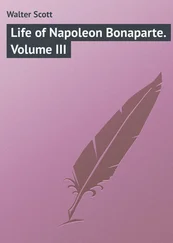Afterwards, Sir Edward took Sickert to Rose Hill, his house at Northenden, just outside Manchester. He wanted to show off his collection of ‘modern paintings’ – a mass of conventional works in gold frames, all bought from the Royal Academy summer shows – and, even worse, a portrait by Herkomer. 92 As Sickert liked to recall, ‘[Sir Edward] asked me to be quite frank – which I was.’ Sickert was rather more impressed by a large piece of rock – ‘like the tip of a giant’s cigar’ – which formed the centrepiece of one of the flowerbeds in the garden. Sir Edward informed him that it was the top of Snowdon: the mountain was part of his property, and he had had the tip ‘sawn off and given a worthy surrounding’. 93
The success of the Manchester visit was not long enjoyed. On 29 September Maggie Cobden died suddenly in London after contracting pneumonia. Her health had never been robust, and she had been ill with that vague Victorian malady, neurasthenia, for the previous two years. Even so, her death came as a shock. She was only twenty-nine. 94
There was, however, scant time for grieving. It is not even certain that Sickert attended the funeral. He was busy with preparations for the NEAC’s autumn exhibition. As ever, he was on all the committees. The show opened at the end of November. Sickert’s portrait of George Moore was the most talked about picture in the exhibition. Amongst the core of kindly disposed reviewers the picture was considered as ‘the club’s masterpiece’. Wedmore praised its ‘effervescence of vitality’, 95 whilst MacColl claimed that it gave ‘three several satisfactions’:
From due distance it attracts first by its design and colour, and then arrests by its extraordinary expressiveness. Whether or not it is like its original, it is a notable piece of character painting, and suggests how powerful a weapon lies in the hand of the painter if he chooses, in paint to criticise the critic. But there is a third pleasure as well to be got from the picture, and that is when one gets, so to speak, inside the fence, and examines the handling – how the drawing is built up, the deliberate skill and subtlety of the touches. 96
It was a moot point just what Sickert’s ‘criticism’ of the critic, Moore, was. Moore in his own review was generous about the painting. 97 In private he was less polite. According to one tradition, he was very much annoyed when he first saw the picture. ‘You have made me look like a booby’, he said. ‘But you are a booby,’ was Sickert’s answer. 98 Certainly Moore had his boobyish aspects. His naivety, his vanity, his absurd enthusiasms, his technical gaffes (as when he talked of painters using Naples Yellow ‘years after it had been banned from every living palette’) were inescapable. 99 He had recently provoked the ire of Degas by publishing an article on the artist, full of colour and indiscretions. Yet for all this, Sickert still liked and admired him, and took his criticism seriously. After any NEAC opening he and Steer would still tramp down to the Dudley Gallery to examine the press-cutting book to see what Moore had said of their work. 100 If the portrait looked odd it must be remembered that so, too, did Moore. Even Manet’s masterly portrait of him had been jokingly titled ‘the drowned fisherman’.
The intended effect of the picture had surely been to reinforce the web of connection in the public consciousness between the Impressionist group and its most eloquent critical champion. It was a familiar enough ploy. And indeed the exhibition sought to establish, or strengthen, several other strands of significant connection. Sargent had been persuaded to lend two paintings by Monet, and Sickert (or, as the catalogue acknowledged, ‘Mrs Cobden-Sickert’) lent Degas’ Répétition d’un Ballet sur la Scène . The picture was hailed by MacColl as a ‘masterpiece’, and its exposure was called ‘an event of first-rate artistic importance’. 101 Although the National Observer’s assertion ‘Now for the first time is a work of Degas publicly exhibited in London’ was not quite accurate, it served as a reminder of how relatively unknown Degas’ art still was at this time. 102
Sickert strove constantly to raise Degas’ profile in England. When MacColl announced that he was going over to Paris, Sickert hastened to equip him with the names and addresses of dealers and collectors who held works by Degas, so that he might gain a fuller knowledge of the artist’s work. 103 Sickert also agreed to contribute an unsigned article on Degas to the ‘Modern Men’ series in the National Observer . 104 This was a delicate operation. Sickert was very anxious not to offend his hero, as Moore had done. He had been uncomfortably implicated in Moore’s article, which was illustrated with a photograph of the Répétition d’un Ballet sur la Scène ‘by permission of Walter Sickert’. 105 This perhaps accounts for the curiously stilted and anodyne tone of the piece that appeared in the National Observer at the end of October. 106
After the tragedy of Maggie’s death there was happier news at the end of the year with the announcement of Jane Cobden’s engagement to Fisher Unwin. The wedding took place early in 1892 at Heyshot Church near Dunford. 107 Sickert was there with Ellen. 108 For him it was a useful thing to have an enterprising publisher as a brother-in-law. The association became a close one. After a brief honeymoon, the Cobden-Unwins and the Cobden-Sickerts all lived together at 10 Hereford Square. 109 Unwin for his part greatly appreciated his new connection with a Whistler-trained controversialist. Not everyone shared this view. When the volume on Bastien-Lepage appeared early that spring some critics thought it extraordinary that a book dedicated to the memory of the renowned ‘founder of modern naturalistic painting’ should contain such a frank attack on his work. One reviewer spoke of the ‘exceedingly foolish and impertinent deprecation of Lepage contributed by way of a make-weight to the volume’, adding that ‘it will suffice to say that it is from the pen of the publisher’s brother-in-law. If Mr Unwin is content to exhibit his family affection at the expense of his business sanity, it is after all more his affair than ours.’ 110 Even sympathetic critics felt that Sickert, for all his ‘admirable incisiveness and wit’, had rather overstated his case. 111 But that, of course, was the point. Exaggeration was an effective ploy, as both Unwin and Sickert recognized. The book received widespread attention, and amongst a section of the new generation of painters even ‘did much to check the vogue for Bastien-Lepage’ and to influence artists in the direction of Sickert’s own views. 112
Sickert’s association with Unwin also drew him closer to the Pennells. Unwin got on well with Joseph Pennell, whom he regarded as a potential author and illustrator. The Pennells were regular guests at Hereford Square, and Sickert and Unwin attended the crowded Thursday evening receptions at the Pennells’ flat in Buckingham Street, off the Strand, where a regular ruck of artists, illustrators, writers, and journalists would gather to drink, intrigue, and shout gossip at each other. 113
Sickert and Pennell’s joint campaign against Herkomer had been revived when the distinguished RA was elected a fellow of the Royal Society of Painter-Etchers, an honour that they considered singularly inappropriate in the light of his ‘fraudulent attempt to sell, as etchings by himself, illustrations which [were] not etchings’. 114 W. E. Henley, the National Observer ’s irascible editor, who was delighted to keep the controversy rolling, wrote to Charles Whibley urging him to ‘keep Sickert up to the mark’. 115 Sickert needed little encouragement. He wrote an open letter to the RSPE’s president, Seymour Haden, expressing his ‘surprise’ at Herkomer’s elevation, and announcing ‘with the profoundest regret’ the resignation of his own membership. 116 It was the first of Sickert’s resignations. It would not be the last. Over the coming years, no artist resigned more often, or with more aplomb. As a first attempt this severance from the RSPE was well managed: modestly dramatic, artistically self-righteous, and not too self-wounding. He was etching less and less. 117
Читать дальше
